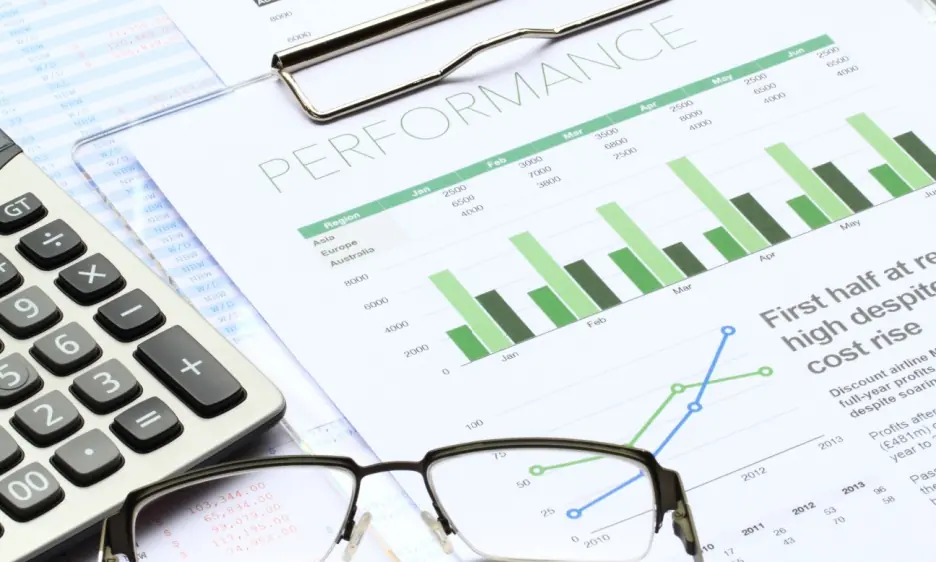Half-Yearly Reports: What Makes Them So Important?
 Share
Share
 Copy Url
Copy Url

Half-yearly reports are crucial in helping businesses stay on top of their financial health. These reports, also known as half-year reports, consolidate key data from your company’s activities over six months. They’re essential for management to make informed decisions, showing a company's progress and potential roadblocks. In the world of corporate reports, half-yearly reports serve as a checkpoint, allowing businesses to track performance and adjust strategies as needed. It’s more than a responsibility—it’s a smart move to stay ahead of the competition.
In this article, we’ll dive into what half-yearly reports are and why they matter. We’ll explore the benefits they offer, including their role in creating reliable financial reports. You’ll also learn about the key elements that make up a strong half-yearly report, along with tips on how to design one effectively. Whether you’re new to corporate reports or looking to refine your approach, this guide has you covered!

What are Half-Yearly Reports?
Half-yearly reports give a clear picture of a company’s financial health for the first six months of the year. These half-year financial reports are prepared in accordance with accounting standards. They help businesses check their progress and make necessary changes. By consolidating data from the half-year, management can make better decisions. Investors also use these reports to compare the company with others in the industry, spotting strengths and weaknesses.
The target audience includes shareholders, management, and potential investors who want updates on the company’s financial health and sustainability. These reports help maintain audience engagement by providing clear and timely information. An auditor usually checks them for accuracy. This ensures the company meets its responsibility to stakeholders by being transparent and compliant. In the end, half-yearly reports build trust and show the company’s commitment to long-term sustainability.

What Benefits do they Offer?
Half-yearly reports give key insights into a company’s financial health and progress over six months. They allow businesses and stakeholders to make decisions sooner, without waiting for the company's annual report. Here are 10 major benefits showing how these reports improve transparency, decision-making, and strategy.
1. Regular Financial Updates
Half-yearly reports offer updates more often than the annual report. Doing this allows companies to keep track of their financial health more closely. They give timely financial information to the board and stakeholders. This lets businesses change strategies to tackle current challenges or grab opportunities, keeping things running smoothly.
2. Better Decision-Making
Half-yearly reports give a quick view of how the company is doing every six months. This helps management make smarter decisions, as they don’t have to wait a full year to act. These reports spot trends early, so businesses can respond quickly to risks or opportunities, which is vital in today’s fast-moving market.
3. Improved Investor Confidence
Reports generated every six months show investors how the company is performing regularly. This helps build trust by showing progress. The transparency of these reports boosts audience engagement and reassures investors that their money is being handled responsibly.
4. Performance Evaluation
These reports let companies check how well they’re doing and make changes halfway through the year. By comparing current numbers with past results or competitors, businesses can figure out their strengths and weaknesses. This ensures they stay on track with their long-term goals.
5. Forecasting and Planning
With data from the first half of the year, businesses can better predict future outcomes. Half-year financial reports help identify potential growth patterns, which is important for long-term planning. This gives management the tools to plan better for the second half of the year.
6. Legal and Regulatory Compliance
Many companies must submit half-yearly financial reports by law. They must prepare these reports according to set accounting standards. Following these rules not only keeps businesses legally safe but also boosts their credibility by showing they fulfill their responsibility to be transparent.
7. Cost Management
Looking at half-yearly reports helps businesses spot areas where they can save money. They can make changes mid-year to cut down on inefficiencies and adjust how resources are being used. This improves efficiency and saves money over time.
8. Operational Transparency
Half-year financial reports make a company more transparent by showing detailed information about its performance. This builds trust with stakeholders and shows a commitment to sustainability. Being open with both investors and customers is key to maintaining strong relationships.
9. Benchmarking
These reports let businesses compare their performance with others in their industry. By seeing where they fall short or excel, companies can make the necessary changes to stay competitive. They also highlight strengths that companies can use to fuel future growth.
10. Informed Risk Management
Half-yearly reports help companies spot risks earlier. By reviewing performance at the halfway point, management can tackle problems before they get bigger. This approach ensures businesses are better prepared for challenges in the second half of the year.
These reports are a powerful tool for improving transparency, decision-making, and efficiency. By providing updates more often than the annual report, they help businesses stay competitive and achieve their financial goals. For companies looking to boost their strategies and grow long-term, half-yearly reports are essential.

Elements of a Half-Yearly Report
Half-yearly reports consist of several key elements that give a complete overview of a company’s financial and operational performance over six months. These elements ensure transparency and accuracy, while also fulfilling legal requirements. Below, we break down the important components of half-yearly reports, highlighting their role in providing clear financial data and ensuring compliance with accounting standards.
1. Consolidated Financial Statements
Consolidated financial statements are a crucial part of half-yearly reports. They combine the financial activities of a parent company and its subsidiaries, giving a full picture of the company’s financial health. These statements include the half-year income statement, changes in equity, and cash flow statement. This helps the board and stakeholders assess the company’s mid-year performance and plan for the remaining year.
2. Explanatory Notes
Explanatory notes provide extra details related to the financial statements in half-yearly reports. These notes clarify the figures presented and explain any adjustments or unusual transactions. By including this information, companies ensure that stakeholders have a clear understanding of the data. These notes help the council or auditors make more informed assessments.
3. Statutory Auditors' Review Report
The review report by statutory auditors is a key element. This report assesses the accuracy of the financial data and ensures it follows all necessary accounting standards. Auditors check the fairness of the financial statements, ensuring transparency. This step strengthens the company’s credibility and reassures investors of the report’s accuracy.
4. Declaration
The declaration section of half-yearly reports is where the responsible party confirms the accuracy of the information. This declaration ensures accountability, stating that the report has been prepared according to the law. It assures stakeholders that the report is compliant with regulations and has been compiled with care. This declaration is vital for maintaining transparency and trust.
Note:- Compliance with SEBI and Indian Accounting Standards
Companies in India must follow SEBI regulations and Indian Accounting Standard 25 (AS 25) when preparing half-yearly reports. SEBI requires companies to follow strict guidelines for annual report design and interim financial reporting. Compliance ensures that reports are accurate, legal, and prepared transparently. This helps build investor trust and supports the company’s sustainability efforts.

How to Design a Half-Yearly Report
Designing a half-yearly report requires careful planning to present clear, concise, and visually appealing information. Here’s how you can approach the design:
1. Structure and Organization
Start by outlining the key sections of the report. These include financial data, performance metrics, leadership updates, and future goals. Keep the structure simple and logical, with a clear flow from one section to the next. A well-organized structure ensures readers can easily navigate the report, improving readability.
2. Data Visualization
Use charts, graphs, and infographics to make financial data easier to understand. Visuals help break down complex information and allow stakeholders to grasp key points quickly. For example, bar charts or pie charts can be used to display revenue growth or expense distribution. Data visualization makes your report more engaging and reader-friendly.
3. Consistent Branding
Incorporate your company’s logo, colors, and fonts throughout the report to maintain a cohesive brand identity. This helps reinforce your company's image and makes the report feel like a natural extension of your brand. Consistency in branding builds trust with your audience, especially investors and stakeholders.
4. Typography and Layout
Choose simple, legible fonts for both the print and digital versions of the report. Stick to 2-3 font types and ensure that headers, sub-headers, and body text have a clear hierarchy. A clean layout with ample white space enhances readability, making the content easy to follow without overwhelming the reader.
5. High-Quality Visuals
Include high-resolution images, icons, and illustrations that align with your company’s identity. Avoid generic stock photos and instead opt for visuals that reflect your brand’s authenticity. Photos of key team members, product launches, or company events add a personal touch to the report, making it more relatable.
6. Color Use
Strategically apply colors to highlight important sections and data points. Use your brand’s primary colors to create visual interest without cluttering the design. Be mindful of color contrast to ensure accessibility, especially for text against background colors. Using a consistent color scheme makes the report visually appealing and professional.
7. Proof and Refine
Once the report is designed, conduct many rounds of revisions. Check for alignment issues, typography errors, and accuracy in data presentation. Ensure that all sections are polished and cohesive before finalizing the report for print or digital distribution.
By focusing on these elements, you can create a well-structured and visually compelling half-yearly report that effectively communicates your company’s progress and plans.

Get your Half-Year Financial Reports designed by Report Yak
Designing compelling half-yearly reports is vital for businesses aiming to maintain transparency and foster trust with stakeholders. These reports serve as crucial checkpoints, allowing companies to assess their financial health, make informed decisions, and stay competitive. A well-designed report not only communicates key data but also strengthens a company’s credibility and compliance with regulatory standards. This is where Report Yak comes in. As India's best report design agency, Report Yak specializes in crafting half-yearly reports, annual reports, sustainability reports, and more. We also work with clients worldwide who prefer to outsource their report design needs.
For inquiries, contact us via WhatsApp, call us at 1800 121 5955 (India), or email us at contact@reportyak.com. You can also fill out the Contact Form on our website, and we'll get back to you promptly. Let Report Yak help you design reports that leave a lasting impression.
Related Posts
-
Integrated Reporting Made Easy For Modern Companies
annual reportAnnual Report design
+6
Dec 31, 2025Share
Copy Url
Simplifying ESG Disclosure for Better Impact
corporate reportingenvironmental and social initiatives
+6
Aug 28, 2025Share
Copy Url
GRI Sustainability Taxonomy: Learn How to Turn Data Into Advantage
corporate governancecorporate reporting
+11
Jul 1, 2025Share
Copy Url


